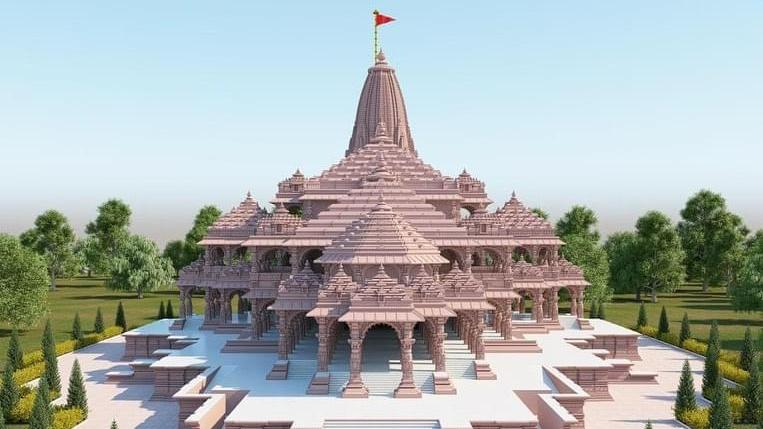Ram Mandir Ayodhya – News and Current Affairs
Published On January 4th, 2024
Sri Ram Janmabhoomi Teerth Kshetra Trust, responsible for the temple construction, initially estimated the cost at Rs. 1,800 crore (approximately $220 million).

Breaking Down the Budget: From Grantham Stone to Security Systems
The Sri Ram Janmabhoomi Teerth Kshetra Trust, entrusted with the temple’s construction, initially estimated a budget of Rs. 1,800 crore (approximately $220 million). This figure encompasses the cost of carving and shaping the iconic Grantham sandstone, crafting intricate carvings that whisper tales of Ramayana, and erecting the majestic structure itself. Additionally, it factors in the procurement of materials, the deployment of skilled laborers and machinery, and essential administrative expenses.
However, some reports suggest that unforeseen circumstances and potential additions could push the final cost to Rs. 3,200 crore (approximately $400 million). This underscores the dynamic nature of such a monumental project, constantly evolving as devotion translates into tangible form.
Beyond the Temple Walls: Land Acquisition and More
Building the Ram Mandir isn’t simply about constructing a magnificent structure. It necessitates land acquisition and development, necessitating the purchase of additional land around the temple site and creating robust infrastructure like roads, parking facilities, and serene gardens.
Security and safety remain paramount concerns. Implementing high-tech CCTV cameras, sophisticated access control systems, and a dedicated security force requires significant investment, ensuring the sanctity of the temple and the safety of visitors.
Of course, no large-scale project operates without incurring administrative expenses. Salaries for personnel, transportation costs, communication expenses, and essential operational needs all contribute to the overall budget.
Funding the Dream: From Devotees to Corporate Sponsors
The construction of the Ram Mandir rests heavily on the shoulders of its most ardent supporters – the people of India. Through voluntary donations, devotees across the nation and beyond, driven by their unwavering faith, are pouring their hearts and resources into realizing this magnificent vision.
Corporate sponsorships also play a vital role. Leading companies, driven by a sense of national pride and religious fervor, may contribute funds or specific materials for aspects of the construction, adding their names to the tapestry of contributors. While direct financial assistance from the government is unlikely, indirect support through infrastructure development or tax benefits remains a possibility.
Transparency and Accountability: Building Trust Brick by Brick
The Sri Ram Janmabhoomi Teerth Kshetra Trust understands the immense responsibility it carries. To ensure transparency and accountability, the Trust maintains a transparent system of financial management. Periodic updates on the progress of construction and how funds are utilized are readily available to the public. Additionally, an independent body regularly audits the accounts, providing further layers of assurance that every rupee donated is used judiciously.
Beyond the Numbers: A Monument of Faith and Unity
While the financial aspect of the Ram Mandir construction is significant, it pales in comparison to its immense cultural and spiritual significance. For millions of Hindus in India and across the globe, the temple represents a beacon of hope, a symbol of unity, and a testament to the enduring strength of faith. It stands as a living testament to the resilience of the Hindu spirit, weathering centuries of strife and emerging stronger, more resplendent than ever.
In Conclusion: A Legacy in Stone and Spirit
The Ram Mandir is not just a construction project; it’s a national movement, a shared dream taking shape with every chiseled block and intricately carved pillar. While the cost may be substantial, it pales in comparison to the immeasurable value it holds for a nation and its people. As the temple rises higher, bathed in the golden rays of the Indian sun, it reminds us that faith, devotion, and unity can truly move mountains – or, in this case, carve them into breathtaking monuments that echo through time.
